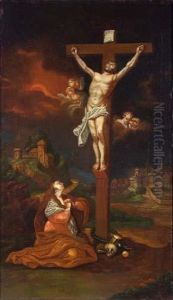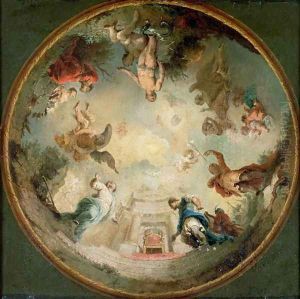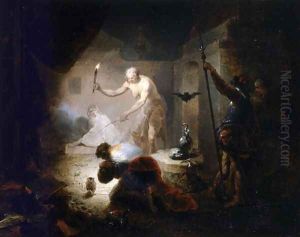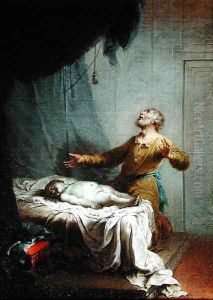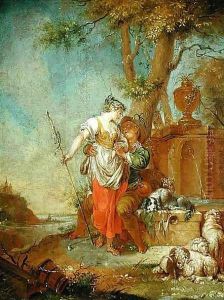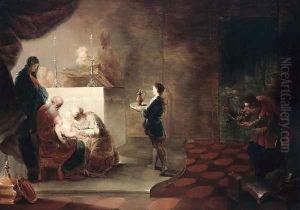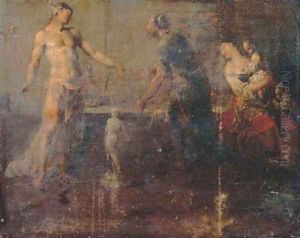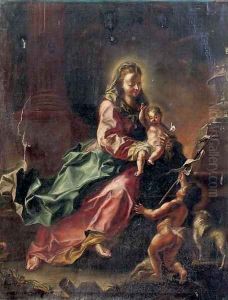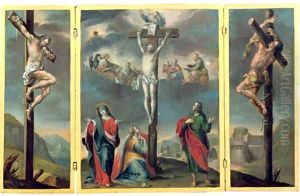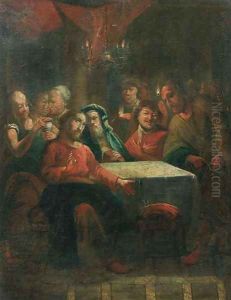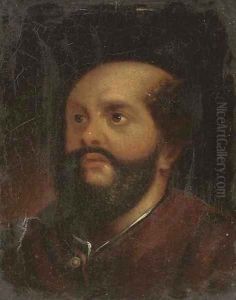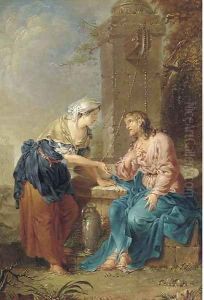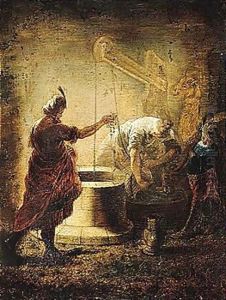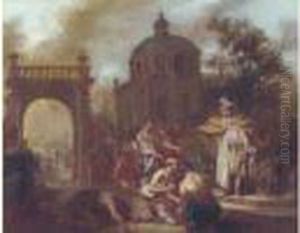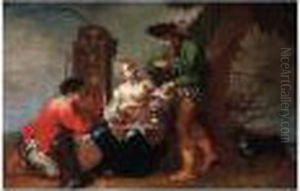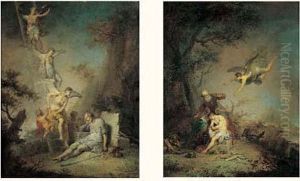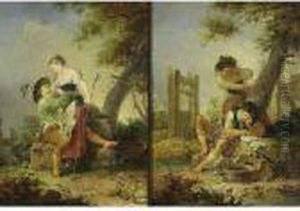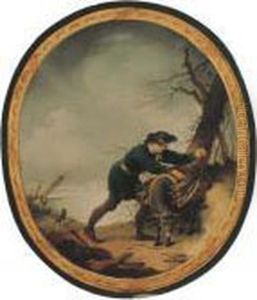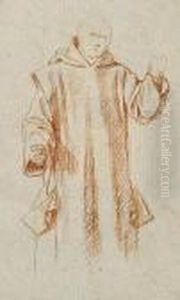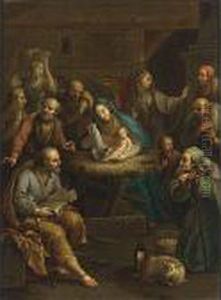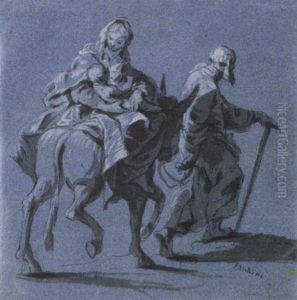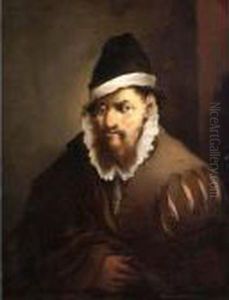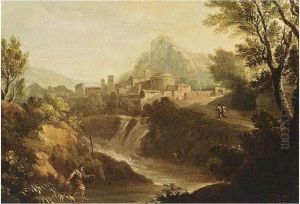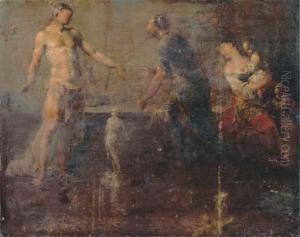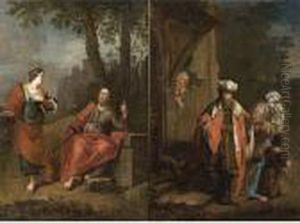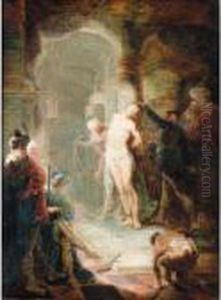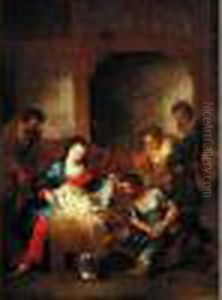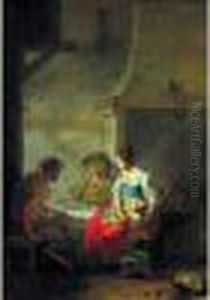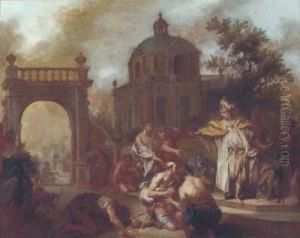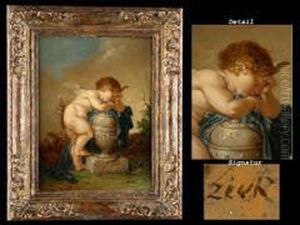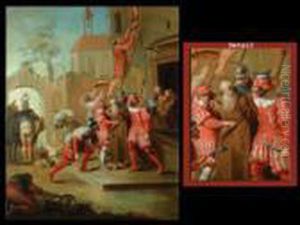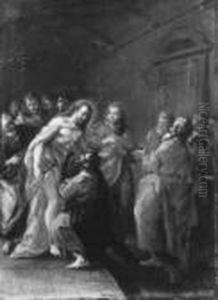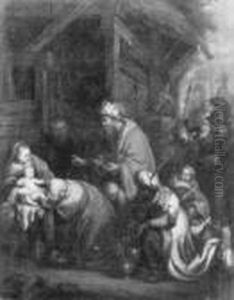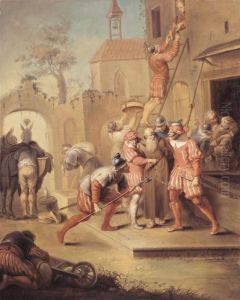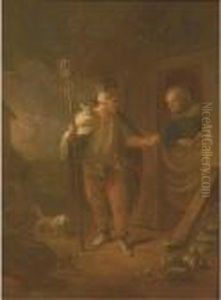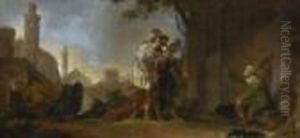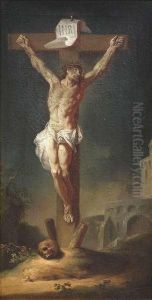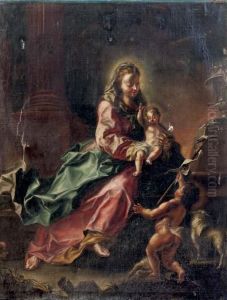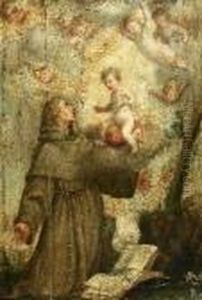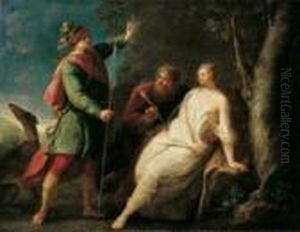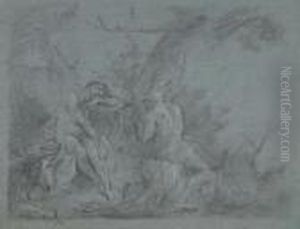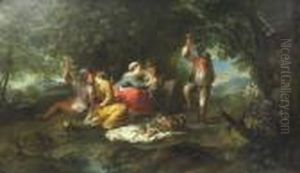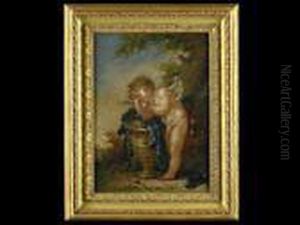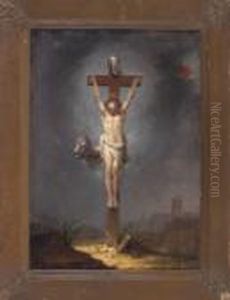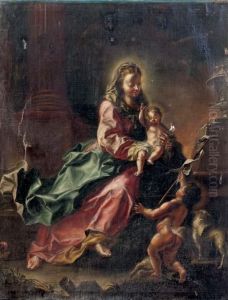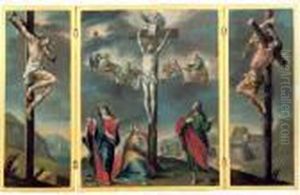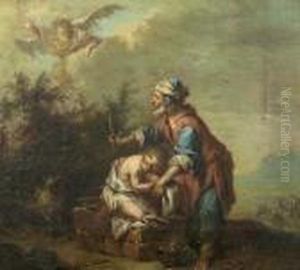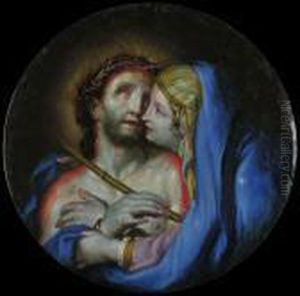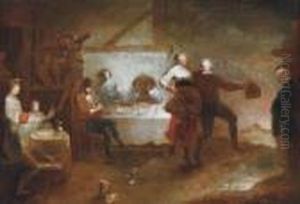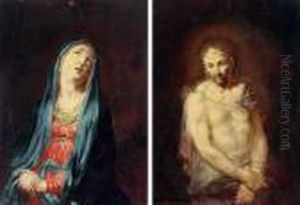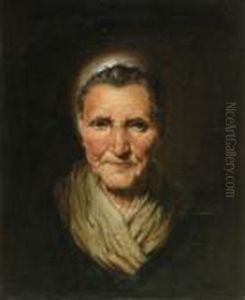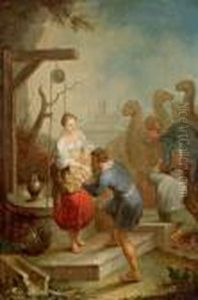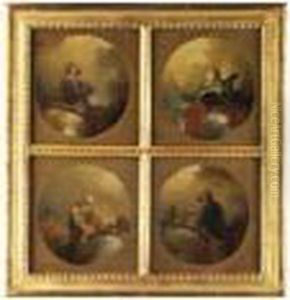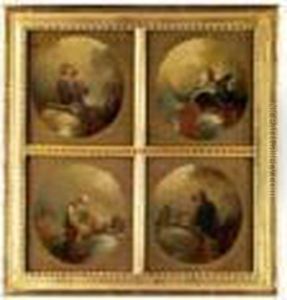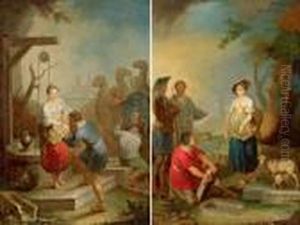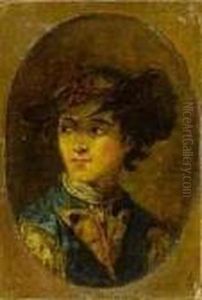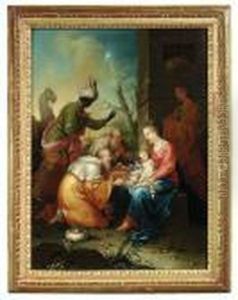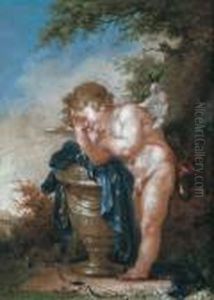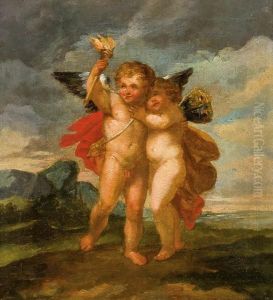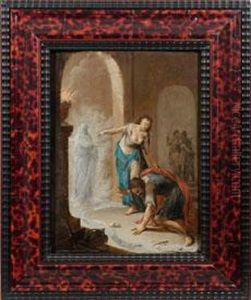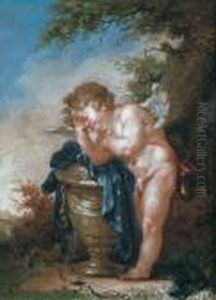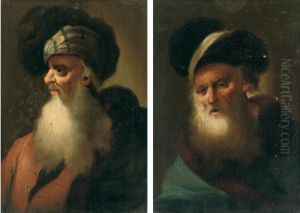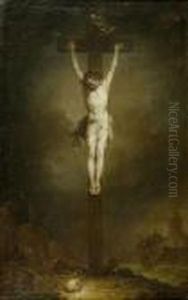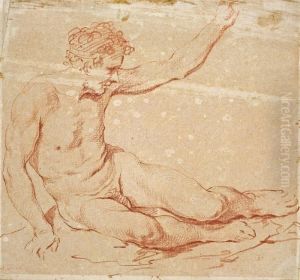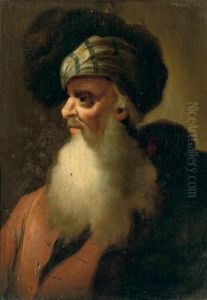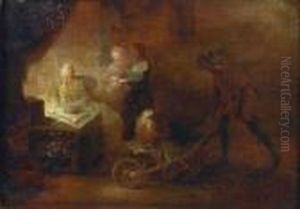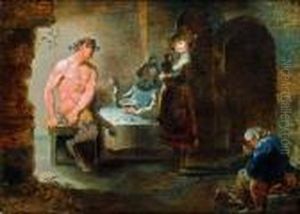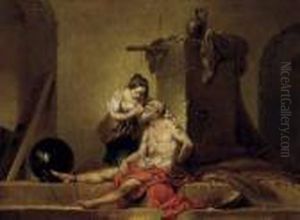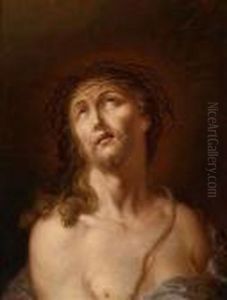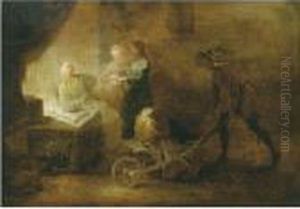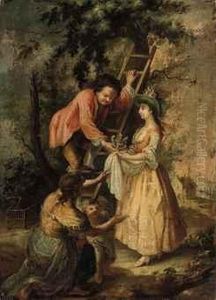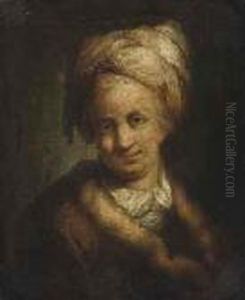Januarius Zick Paintings
Januarius Zick was a German painter and architect, born on February 6, 1730, in Munich, Germany. He is recognized as an important representative of the late Baroque and early Neoclassicism in the region of Southern Germany. Zick was the son of the renowned painter Fresko Zick, from whom he received his initial training in painting. His father's influence was profound, as Fresko was an accomplished artist in the fresco technique, which would later play a significant role in Januarius's own artistic development.
Januarius Zick's career was marked by his significant contributions to church decorations and his work as a fresco painter. He was particularly skilled in creating large-scale ceiling frescoes that combined religious themes with allegorical and mythological elements, a common practice during the Baroque period. His work was known for its dynamic compositions, vibrant colors, and the incorporation of architectural elements that created an illusion of three-dimensional space.
In 1753, Zick married Anna Katharina Prechter, with whom he had several children. He moved to Würzburg, where he worked on various projects, including the design and decoration of churches and palaces. One of his most notable works from this period is the decoration of the Stiftskirche in Neustadt an der Weinstraße. His frescoes often reflected the transition from the Baroque to the Neoclassical style, showcasing a combination of traditional elements with an emerging classical simplicity and harmony.
Throughout his life, Zick traveled extensively within Germany and gained considerable fame for his artistic talents. He worked in numerous cities, including Mainz, Koblenz, and Trier, where he contributed to the decoration of many significant buildings. His work in ecclesiastical architecture and decoration was especially impactful, helping to shape the artistic landscape of the time.
Januarius Zick's legacy is evident in the number of his surviving works and the influence he had on other artists in the region. His style continued to evolve over the years, and he played a crucial role in the transition of artistic styles during the 18th century in Germany. He died on December 14, 1797, in Ehrenbreitstein (now part of Koblenz), leaving behind a rich body of work that continues to be studied and admired by art historians and enthusiasts alike.
